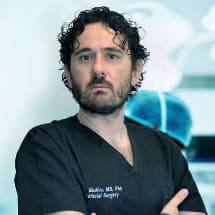Current and Future Trends in Maxillary Sinus Management: Perspectives in Oral Surgery
A special issue of Dentistry Journal (ISSN 2304-6767). This special issue belongs to the section "Oral and Maxillofacial Surgery".
Deadline for manuscript submissions: 10 October 2024 | Viewed by 2090
Special Issue Editor
Interests: bone augmentation procedures; dental implantology; maxillofacial surgery; oral pathology; oral surgery; platelet-rich fibrin
Special Issues, Collections and Topics in MDPI journals
Special Issue Information
Dear Colleagues,
We are honored to present the Special Issue of the Dentistry Journal (Section Oral and Maxillofacial Surgery) entitled “Current and Future Trends in Maxillary Sinus Management: Perspectives in Oral Surgery” to celebrate the 4th meeting of the Italian Post-Graduate Schools of Oral Surgery that will be held on 9 and 10 June 2023 at Magna Graecia University of Catanzaro.
The maxillary sinus is a fundamental anatomical structure that is often involved in many oral surgical procedures in the posterior maxilla, and whose integrity must be preserved.
Maxillary sinus invasion during implant placement and augmentation procedures could be a potential source of infection that leads to the inflammation of Schneiderian membranes and maxillary sinusitis. Maxillary sinusitis may also be related to persistent odontogenic infections.
The research topics included in this Special Issue may be related to (but not limited to) the following:
- Dental extractions;
- Implant surgery;
- Bone augmentation procedures (including sinus floor elevation);
- Maxillary sinusitis related to odontogenic infections;
- Odontogenic and non-odontogenic cysts and tumors;
- Inflammatory, fibro-osseous, and large cell lesions of the jaw;
- Management of oro-antral communication and fistula;
- Osteonecrosis of the jaw.
We look forward to receiving your contributions.
Scientific Steering Committee
Prof. Dr. Giacomo Oteri
Post-Graduate School of Oral Surgery, University of Messina, 66100 Chieti, Italy
Prof. Dr. Gianfranco Favia
Post-Graduate School of Oral Surgery, University of Bari Aldo Moro, 70121 Bari, Italy
Assoc. Prof. Dr. Pietro Felice
Post-Graduate School of Oral Surgery, University of Bologna, 40126 Bologna, Italy
Assoc. Prof. Dr. Stefano Salgarello
Post-Graduate School of Oral Surgery, University of Brescia, 25121 Brescia, Italy
Assoc. Prof. Dr. Rosario Rullo
Post-Graduate School of Oral Surgery, University of Campania Luigi Vanvitelli, 80138 Napoli, Italy
Prof. Dr. Antonio Scarano
Post-Graduate School of Oral Surgery, University of Chieti-Pescara, 66100 Chieti, Italy
Prof. Dr. Mario Capogreco
Post-Graduate School of Oral Surgery, University of L’Aquila, 67010 L’Aquila, Italy
Prof. Dr. Carlo Maiorana
Post-Graduate School of Oral Surgery, University of Milan, 20122 Milano, Italy
Prof. Dr. Raffaele Vinci
Post-Graduate School of Oral Surgery, Vita-Salute San Raffaele University, 20132 Milano, Italy
Prof. Dr. Ugo Consolo
Post-Graduate School of Oral Surgery, University of Modena and Reggio Emilia, 41121 Modena, Italy
Prof. Dr. Gilberto Sammartino
Post-Graduate School of Oral Surgery, University of Naples Federico II, 80138 Napoli, Italy
Prof. Dr. Filippo Graziani
Post-Graduate School of Oral Surgery, University of Pisa, 56126 Pisa, Italy
Prof. Dr. Antonio D’Addona
Post-Graduate School of Oral Surgery, Catholic University of the Sacred Heart, 00168 Roma, Italy
Assoc. Prof. Dr. Roberto Pippi
Post-Graduate School of Oral Surgery, University of Roma La Sapienza, 00185 Roma, Italy
Prof. Dr. Marco Gargari
Post-Graduate School of Oral Surgery, University of Roma Tor Vergata, 00133 Roma, Italy
Assoc. Prof. Dr. Egle Milia
Post-Graduate School of Oral Surgery, University of Sassari, 07100 Sassari, Italy
Prof. Dr. Michele Maglione
Post-Graduate School of Oral Surgery, University of Trieste, 34149 Trieste, Italy
Prof. Dr. Guglielmo Ramieri
Post-Graduate School of Oral Surgery, University of Turin, 10043 Orbassano (TO), Italy
Assoc. Prof. Dr. Monica Pentenero
Post-Graduate School of Oral Surgery, University of Turin, 10043 Orbassano (TO), Italy
Assoc. Prof. Dr. Lorenzo Trevisiol
Post-Graduate School of Oral Surgery, University of Verona, 37134 Verona, Italy
Prof. Dr. Massimo Albanese
Post-Graduate School of Oral Surgery, University of Verona, 37134 Verona, Italy
Prof. Dr. Francesco Cairo
Post-Graduate School of Oral Surgery, University of Florence, 50121 Firenze, Italy
Assoc. Prof. Dr. Paolo Tonelli
Post-Graduate School of Oral Surgery, University of Florence, 50121 Firenze, Italy
Assoc. Prof. Dr. Stefano Parrini
Post-Graduate School of Oral Surgery, University of Siena, 53100 Siena, Italy
Prof. Dr. Lorenzo Lo Muzio
Post-Graduate School of Oral Surgery, University of Foggia, 71122 Foggia, Italy
Contact the Guest Editor or the Managing Editor Ms. Adele Min (adele.min@mdpi.com) for any query.
Prof. Dr. Amerigo Giudice
Guest Editor
Manuscript Submission Information
Manuscripts should be submitted online at www.mdpi.com by registering and logging in to this website. Once you are registered, click here to go to the submission form. Manuscripts can be submitted until the deadline. All submissions that pass pre-check are peer-reviewed. Accepted papers will be published continuously in the journal (as soon as accepted) and will be listed together on the special issue website. Research articles, review articles as well as short communications are invited. For planned papers, a title and short abstract (about 100 words) can be sent to the Editorial Office for announcement on this website.
Submitted manuscripts should not have been published previously, nor be under consideration for publication elsewhere (except conference proceedings papers). All manuscripts are thoroughly refereed through a single-blind peer-review process. A guide for authors and other relevant information for submission of manuscripts is available on the Instructions for Authors page. Dentistry Journal is an international peer-reviewed open access monthly journal published by MDPI.
Please visit the Instructions for Authors page before submitting a manuscript. The Article Processing Charge (APC) for publication in this open access journal is 2000 CHF (Swiss Francs). Submitted papers should be well formatted and use good English. Authors may use MDPI's English editing service prior to publication or during author revisions.
Keywords
- bone augmentation
- cysts
- dental extractions
- implant surgery
- maxillary sinus
- oro-antral communication
- osteonecrosis of the jaw
- sinus floor elevation
- sinusitis
- tumors






